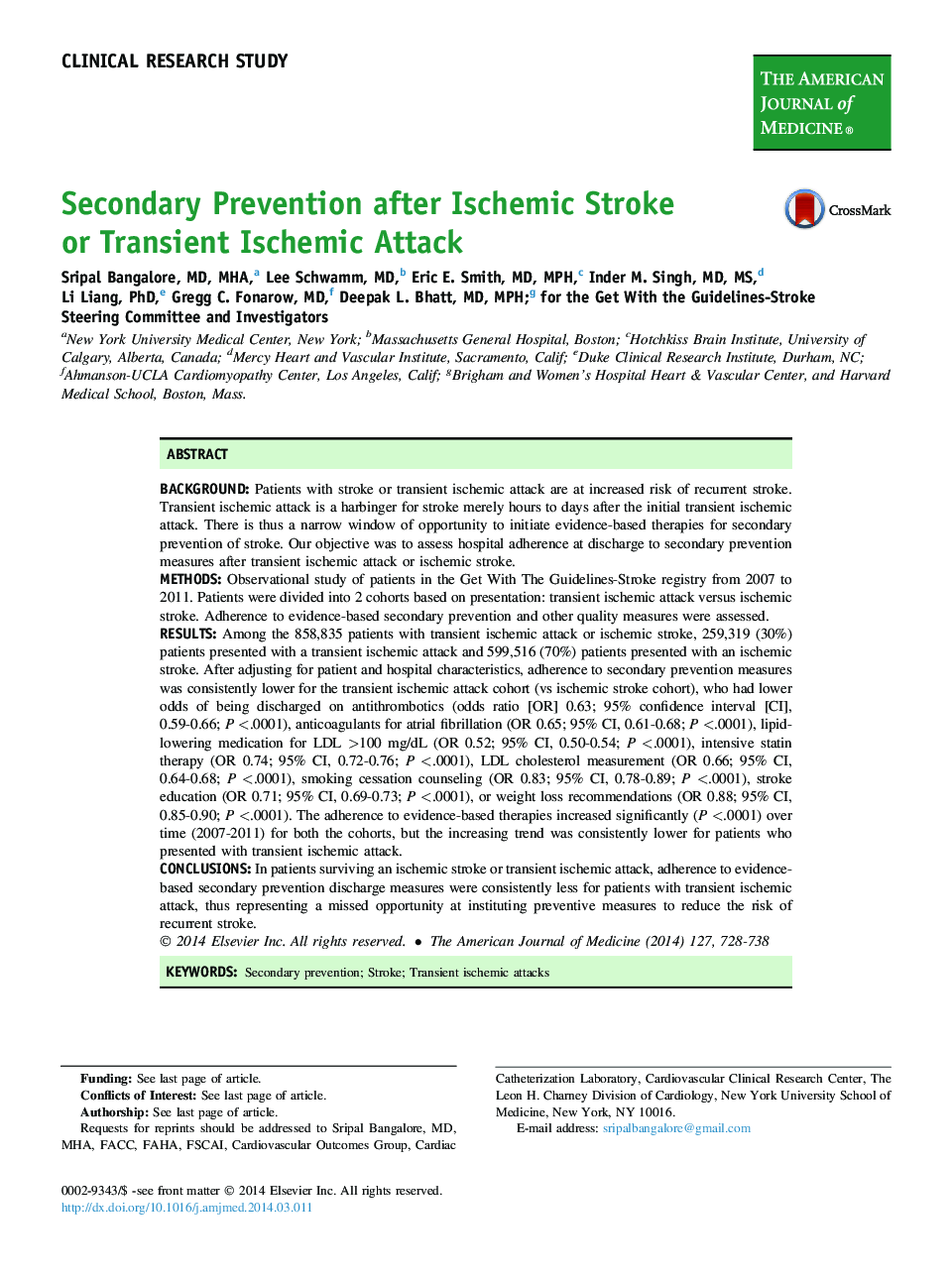| کد مقاله | کد نشریه | سال انتشار | مقاله انگلیسی | نسخه تمام متن |
|---|---|---|---|---|
| 2715112 | 1566134 | 2014 | 11 صفحه PDF | دانلود رایگان |
BackgroundPatients with stroke or transient ischemic attack are at increased risk of recurrent stroke. Transient ischemic attack is a harbinger for stroke merely hours to days after the initial transient ischemic attack. There is thus a narrow window of opportunity to initiate evidence-based therapies for secondary prevention of stroke. Our objective was to assess hospital adherence at discharge to secondary prevention measures after transient ischemic attack or ischemic stroke.MethodsObservational study of patients in the Get With The Guidelines-Stroke registry from 2007 to 2011. Patients were divided into 2 cohorts based on presentation: transient ischemic attack versus ischemic stroke. Adherence to evidence-based secondary prevention and other quality measures were assessed.ResultsAmong the 858,835 patients with transient ischemic attack or ischemic stroke, 259,319 (30%) patients presented with a transient ischemic attack and 599,516 (70%) patients presented with an ischemic stroke. After adjusting for patient and hospital characteristics, adherence to secondary prevention measures was consistently lower for the transient ischemic attack cohort (vs ischemic stroke cohort), who had lower odds of being discharged on antithrombotics (odds ratio [OR] 0.63; 95% confidence interval [CI], 0.59-0.66; P <.0001), anticoagulants for atrial fibrillation (OR 0.65; 95% CI, 0.61-0.68; P <.0001), lipid-lowering medication for LDL >100 mg/dL (OR 0.52; 95% CI, 0.50-0.54; P <.0001), intensive statin therapy (OR 0.74; 95% CI, 0.72-0.76; P <.0001), LDL cholesterol measurement (OR 0.66; 95% CI, 0.64-0.68; P <.0001), smoking cessation counseling (OR 0.83; 95% CI, 0.78-0.89; P <.0001), stroke education (OR 0.71; 95% CI, 0.69-0.73; P <.0001), or weight loss recommendations (OR 0.88; 95% CI, 0.85-0.90; P <.0001). The adherence to evidence-based therapies increased significantly (P <.0001) over time (2007-2011) for both the cohorts, but the increasing trend was consistently lower for patients who presented with transient ischemic attack.ConclusionsIn patients surviving an ischemic stroke or transient ischemic attack, adherence to evidence-based secondary prevention discharge measures were consistently less for patients with transient ischemic attack, thus representing a missed opportunity at instituting preventive measures to reduce the risk of recurrent stroke.
Journal: The American Journal of Medicine - Volume 127, Issue 8, August 2014, Pages 728–738
